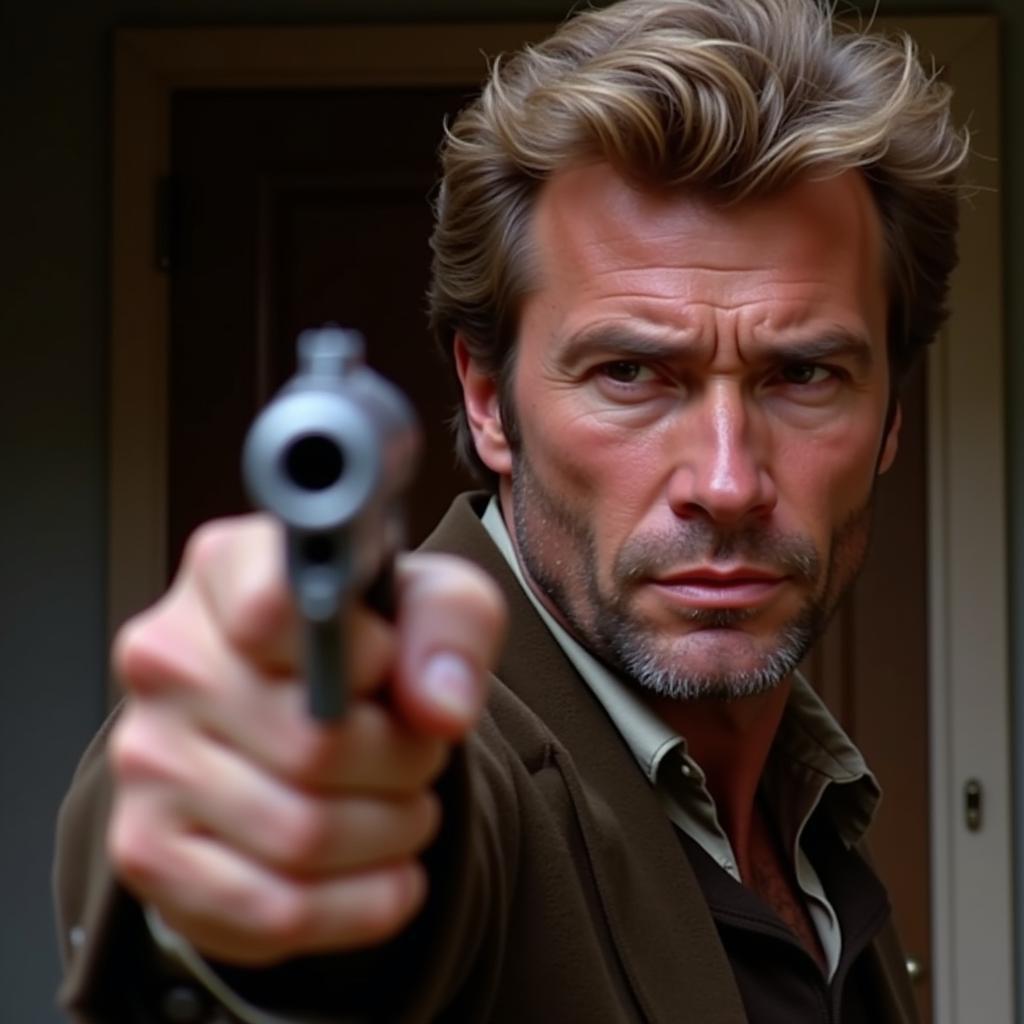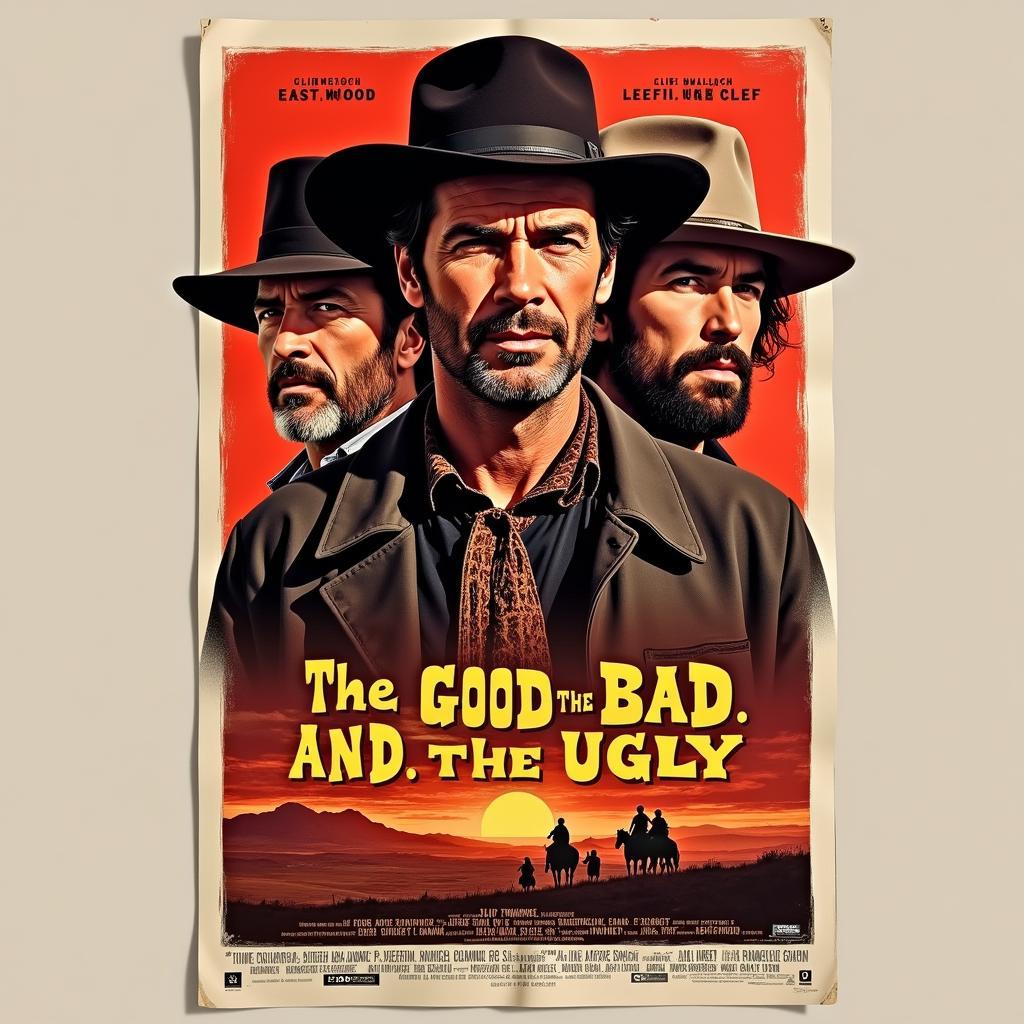Guns in The Good, the Bad and the Ugly: A Deeper Look at a Classic Western Trope
October 28, 2024The iconic film “The Good, the Bad and the Ugly” isn’t just known for its captivating characters and epic scope. It’s also celebrated for its unforgettable imagery, much of which revolves around guns. These weren’t just props; they were tools of the trade, symbols of power, and even plot devices that drove the narrative forward. Let’s delve into the world of guns within this classic Western, examining their significance and impact on the film’s enduring legacy.
 Clint Eastwood aiming a revolver in The Good, the Bad and the Ugly
Clint Eastwood aiming a revolver in The Good, the Bad and the Ugly
More Than Just Tools: Guns as Extensions of Character
One of the most fascinating aspects of the film is how each protagonist’s weapon reflects their personality and approach to the brutal world they inhabit:
- Blondie (The Good): His trusty Colt Navy 1851 revolver embodies practicality and precision. Just like Blondie himself, the gun is reliable, efficient, and always ready for action. It’s a tool for survival in a ruthless environment.
- Angel Eyes (The Bad): Cold and calculating, Angel Eyes favors a Remington 1858 New Army revolver with a unique LeMat conversion. This adaptation allows for both standard rounds and a shotgun blast, reflecting his unpredictable and deadly nature. He’s a force to be reckoned with, willing to employ any means necessary to achieve his aims.
- Tuco (The Ugly): Driven by impulsiveness and greed, Tuco relies on a variety of weapons, including a Winchester 1866 “Yellow Boy” rifle and a Colt 1860 Army revolver. His haphazard arsenal reflects his chaotic approach to life. He’s a wildcard, as likely to shoot himself in the foot as hit his target.
These distinct choices in firearms weren’t accidental. They were deliberate decisions by director Sergio Leone and his team to visually reinforce each character’s motivations and place within the narrative.
A Symphony of Violence: The Language of Guns
Leone masterfully utilizes gunplay not merely as acts of violence, but as expressions of tension, suspense, and even humor. The film’s iconic Mexican standoffs are prime examples. These prolonged scenes, brimming with anticipation, use the language of guns to heighten the drama and keep audiences on the edge of their seats.
The film’s climactic shootout, taking place in a vast cemetery, further exemplifies this concept. The gunfight isn’t just a chaotic exchange of bullets; it’s a carefully choreographed ballet of death. Each shot is meticulously framed and timed, creating a sense of operatic grandeur amidst the violence.
Beyond the Bang: The Enduring Impact
“The Good, the Bad and the Ugly” remains a landmark achievement in the Western genre, and its portrayal of guns plays a significant role in its lasting influence. The film elevates guns from mere weapons to integral elements of storytelling. They become extensions of character, drivers of plot, and symbols of a bygone era.
 Original movie poster of The Good, the Bad and the Ugly
Original movie poster of The Good, the Bad and the Ugly
Leone’s masterful direction, combined with Ennio Morricone’s unforgettable score, transforms scenes of gun violence into something truly unforgettable. The result is a film that transcends genre conventions, offering a profound exploration of greed, morality, and the human condition.